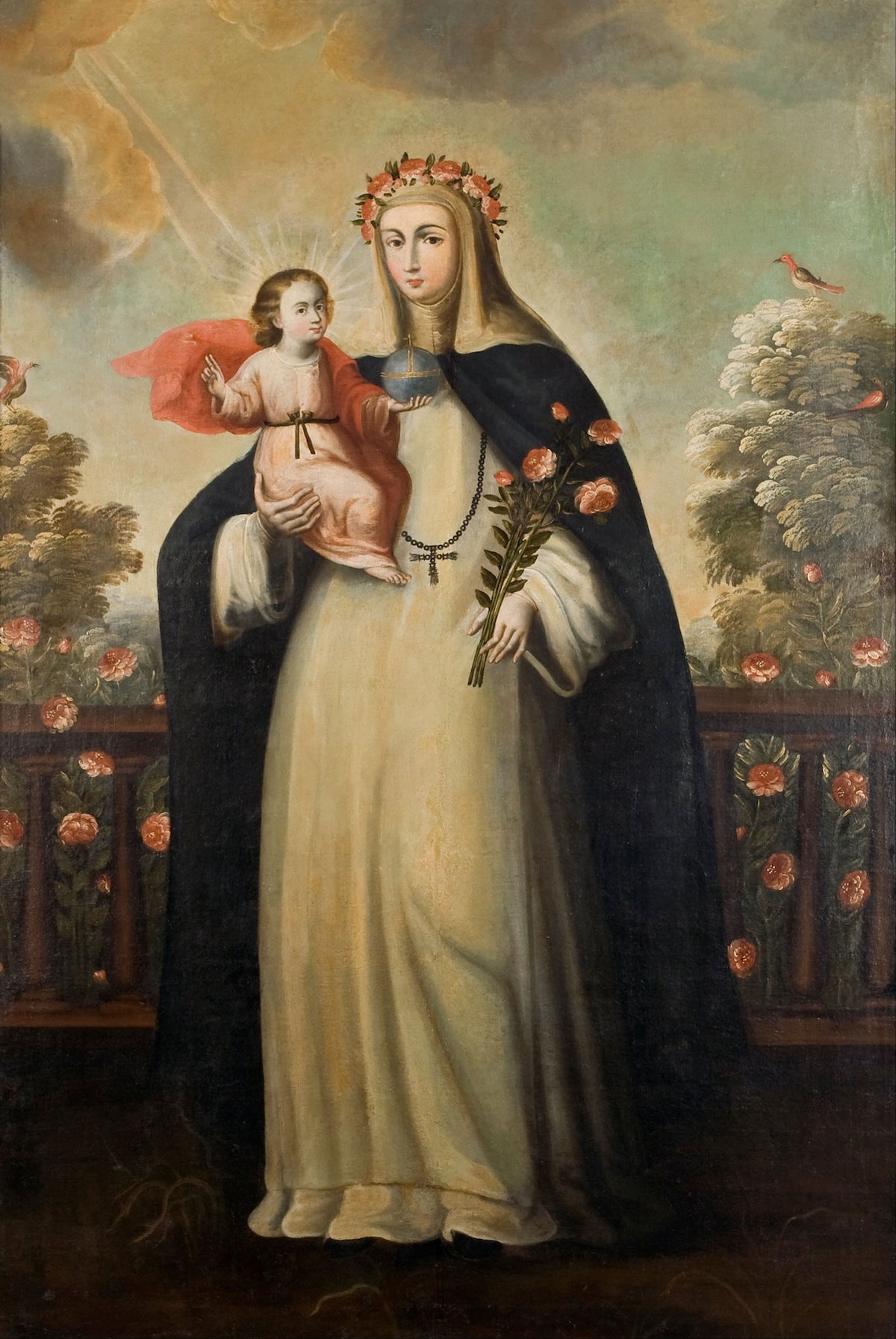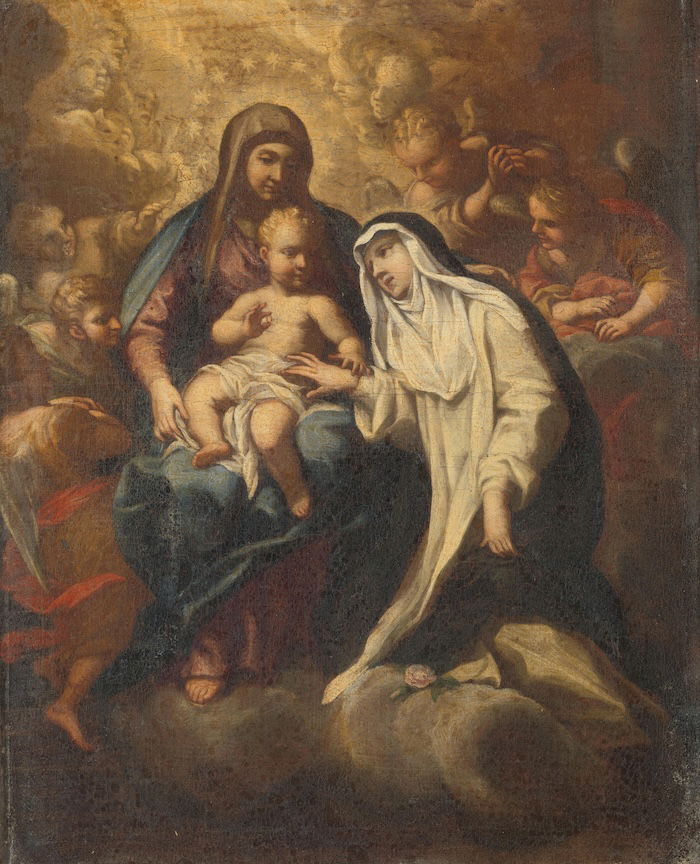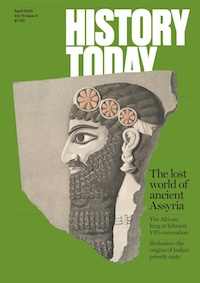Catherine of Siena’s American Daughters
As Christianity spread, it carried Catherine of Siena’s legacy to the Americas. Her asceticism inspired Rose of Lima, Kateri Tekakwitha, and others.

Catherine of Siena (1347-80) was made a saint in 1461, less than a century after she died. In 1970 Pope Paul VI declared her a Doctor of the Church, a rare title given only to saints who have made major contributions to theology or doctrine. Pope Gregory XI, who met with Catherine in 1377, would probably have been horrified. Catherine had travelled to Avignon in southern France, where the popes had been living for 70 years, in an attempt to convince Gregory to return to Rome. He did, but he died a year later, regretting that he had listened to what he called ‘meddling women’. His return did not solve the Church’s problems, and instead led to the Great Schism, in which there were two and later three popes. Catherine wrote hundreds of letters and travelled widely trying to heal the schism, reform problems in the Church, and convince warring Italian city-states to make peace. She failed, and she died in Rome when she was 33.
Catherine was canonised not for her diplomacy, but for her ascetic life, her mystical visions, and posthumous miracles associated with her body. She refused her parents’ plan for her to marry and lived in seclusion at home. She fasted so intensely that she later found it difficult to eat anything other than the Eucharist, and she practised other bodily austerities. Catherine saw visions, worked with the poor, gained a reputation for sanctity, and attracted followers. She dictated her major theological work, a conversation between God and a soul, called the Dialogue of Divine Providence, in which she sees Christ as the bridge to union with the divine, experienced most intensely in consuming the Eucharist.
Catherine’s Dialogue was published in Italian in the late 15th century, shortly after the invention of the printing press. A Spanish translation came in the early 16th century and a French one in the early 17th. These books, and stories about her, travelled, first around Europe and then around the world with missionaries. She became the model for other women, some of whom were also canonised.
The first person from the Western hemisphere to be made a saint heard about Catherine of Siena from Dominican friars when she was a child and began to emulate her pious practices and bodily penance. Born Isabel Flores de Oliva, the daughter of a Spanish soldier and partly Indigenous mother in Lima, she came to be known as Rose of Lima (1586-1617) when as an infant a servant claimed to see her face transform into a rose. Hagiographic stories report that she read Catherine’s Dialogue herself aged five, having miraculously learned to read. Rose did not marry, but lived in a hut in her parents’ yard, where she ministered to the sick, had visions, fasted for days, slept little, whipped herself, and wore a spiked crown. As with Catherine, her severe asceticism and resultant poor health were seen as signs of holiness, of her being willing to suffer in imitation of Christ’s suffering. As her reputation grew, Rose gathered a group of devout women around her, including married women who gave up sexual relations with their husbands. Dominican and Jesuit friars came to her for advice, and people in all social groups, including those of Indigenous and African descent, asked for her prayers and intercessions.
At her early death Rose was viewed by many as a saint, although some of her followers were imprisoned by the Inquisition as ilusas (deluded visionaries). Criticism of her supporters did not dent Rose’s following, however. Stories spread about posthumous miracles that she or her relics accomplished in Peru and Catholic Europe – half of the miracles through which she was made a saint happened in southern Italy, 50 years after she died – and King Philip IV of Spain and his wife Mariana of Austria pushed to have her made a saint. Rose was beatified in 1667 and canonised in 1671. Since then countless parishes, churches, and schools around the world have been named in her honour. She is the patron saint of the Philippines and Peru, where her feast day is a public holiday, and of embroiderers and flower-growers. Her skull, wearing a crown of roses, is on display in the huge baroque Convent of Santo Domingo in Lima and her image is on a Peruvian banknote.

The first Indigenous North American woman to be made a saint was born Tekakwitha (1656-80) in what is now upstate New York. Her parents died from smallpox, which also left her scarred. After meeting French Jesuit missionaries when she was 11 she was baptised Catherine, taking her name from Catherine of Siena. She later came to be known as Kateri, the Mohawk form of Catherine. She moved to the Jesuit mission village of Kahnawake near Montreal, where she joined a group of Mohawk and Iroquois young women who, like Catherine, refused to marry and engaged in severe penitential practices. These included whipping themselves with branches, burning themselves with glowing coals, and jumping into icy lakes, practices adopted from Iroquois rituals of healing and war preparation. Two Jesuit priests at Kahnawake became convinced after she died that Kateri was a saint whose rosary and grave had healing properties. They wrote long biographies in the 1690s describing her devotion to virginity, her austerities, and the many miracles that occurred because of prayers asking for her posthumous assistance.
Kateri Tekakwitha’s path to sainthood was much longer than Rose’s. A local cult developed among French Catholics in Canada after she died and French and German Jesuits included her story in their published reports, but she was beatified only in 1980 and canonised in 2012, largely through the pressure of the Tekakwitha Conference, an organisation of Native American Catholics. There are now a few churches named after her and several official shrines and statues in the US and Canada, and more are built every year. She has become a patron saint of environmentalism and Indigenous people around the world, with ceremonies in her honour that include drumming, smudging, and invocations of the Great Spirit.
Asceticism has long been part of Christian religious practice – and that of many other religions. It is often downplayed today, viewed as self-harm rather than holiness, and other aspects of saints’ lives are held up instead, such as care for the poor. The inspirational biographies that accompany dolls of Catherine, Rose, and Kateri do not mention their harsh practices. But assessing the legacy of Catherine and her spiritual daughters means coming to terms with their entire lives, not simply those that fit with contemporary sensibilities.
Merry Wiesner-Hanks is Distinguished Professor Emerita at the University of Wisconsin-Milwaukee and the author of Women and the Reformations: A Global History (Yale University Press, 2024).






